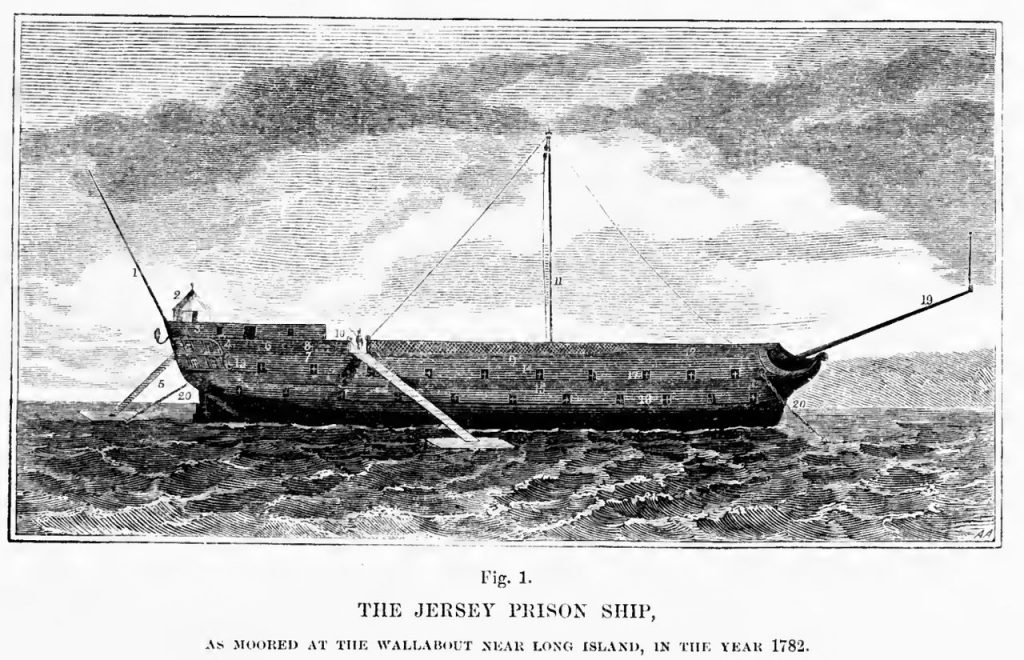During the American Revolutionary War, the HMS Jersey, or “Hell” as many called it, was used by the British to store prisoners. The British kept all captives on abandoned ships while they occupied New York City, and most were held on the HMS Jersey. The nickname “Hell” was earned because of it’s terrible conditions and high death rate. It is perhaps one of the most gruesome and horrible parts of the war.
By November 16, 1776, the British had full occupation of New York City after winning many battles along the way. They would continue to occupy the city until the war ended in 1783. British officers would use the homes of evacuated soldiers for themselves, and imprisoned men who refused to swear their allegiance to Britain. An estimated 11,000 soldiers ended up dying while being held captive in old ships used as prisons.
Four years before the war broke out, the British had converted the Jersey into a hospital ship in March of 1771. It was kept in Wallabout Bay, New York, which would eventually become the Brooklyn Navy Yard in 1801.
When war broke out in 1775 between colonists and the British, the Jersey was no longer used for medical purposes, but as a prison ship. Land prisons filled up fast, so old ships were used instead. Most prisoners held on these ships, the Jersey, specifically, where men captured in battle, or those who refused to join the Royal Navy. The British captured many privateers at sea, and many said they would rather go to jail instead of changing sides. Because of the many prisoners in New York, the conditions on the prison ships were terrible and inhumane. Men were rarely fed or given water, and were prone to disease.
The worst of all was the HMS Jersey. At a time, there were over 1,000 men aboard the Jersey. There were about a dozen deaths on a day to day basis because of the conditions and diseases. Smallpox, dysentery, typhoid fever, yellow fever, were the most common diseases on the ship. While most died of disease, starvation, or dehydration, some even died of torture. If one even attempted escaping, they would be shot by guards. Some would eventually go mad because of the terrible conditions they were being kept in. The dead were thrown overboard into the sea.
It was always full. For every six men, only rations, and very small ones at that, for four men were provided. During hot summer days, men would not only be cramped together, but it would also be unbearably hot. Many men had to strip down naked to stay somewhat cool. It was even hard to breath below decks.
When the British left New York City in 1783, they set fire to the HMS jersey with over 8,000 prisoners still on board. To call the conditions inhumane is an understatement. It definitely earned its nickname of “Hell”. Philip Freneau, a prisoner aboard the Jersey and a well known poet, later wrote a poem about his experiences aboard the ship.
For years to come after the war, bones would be found on the shores of Wallabout Bay. In 1902, the ship’s hull was found accidentally. Some even said they could hear the dead soldiers whispering and that there were strange occurrences on the water when they were nearby.
During the nineteenth century, the remains of the soldiers found were buried at Fort Greene Park, Brooklyn, New York. In 1908, the Prison Ship Martyrs Monument, a 150+ feet obelisk, was dedicated by President William Howard Taft. Twenty-coffins were below the monument. In those coffins were the bones found of those aboard the Jersey and the other prison ships.





